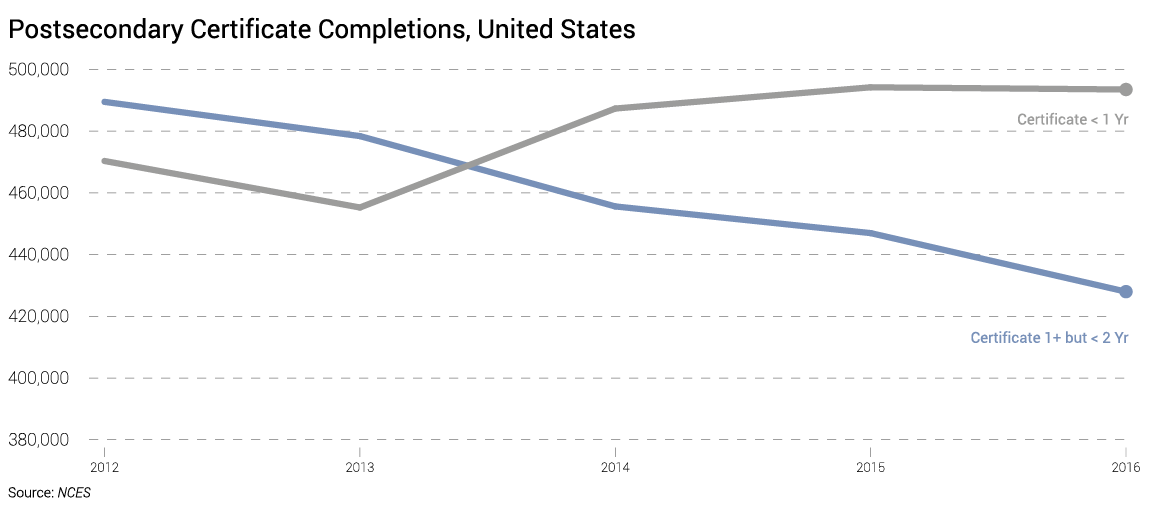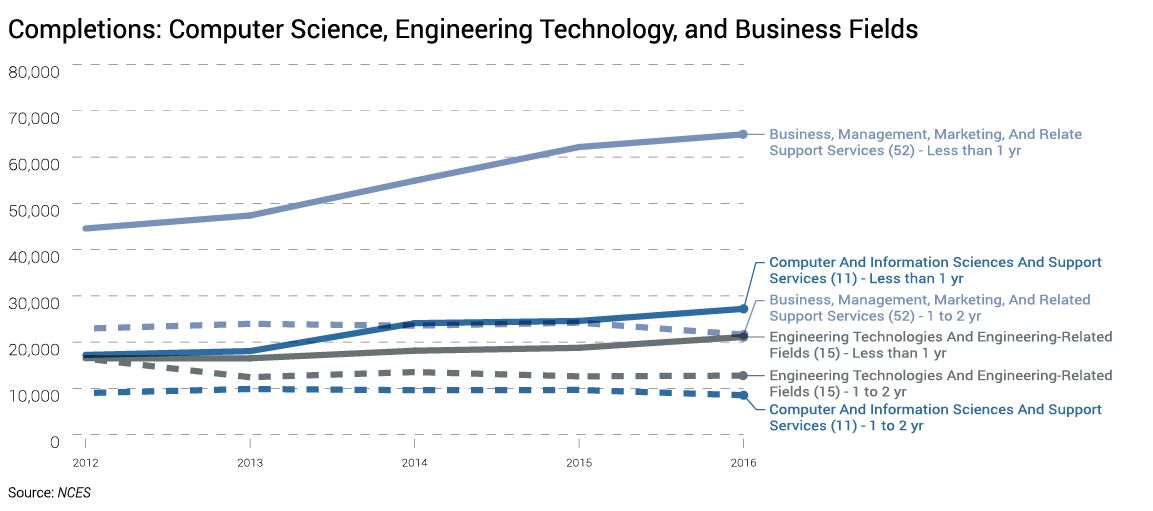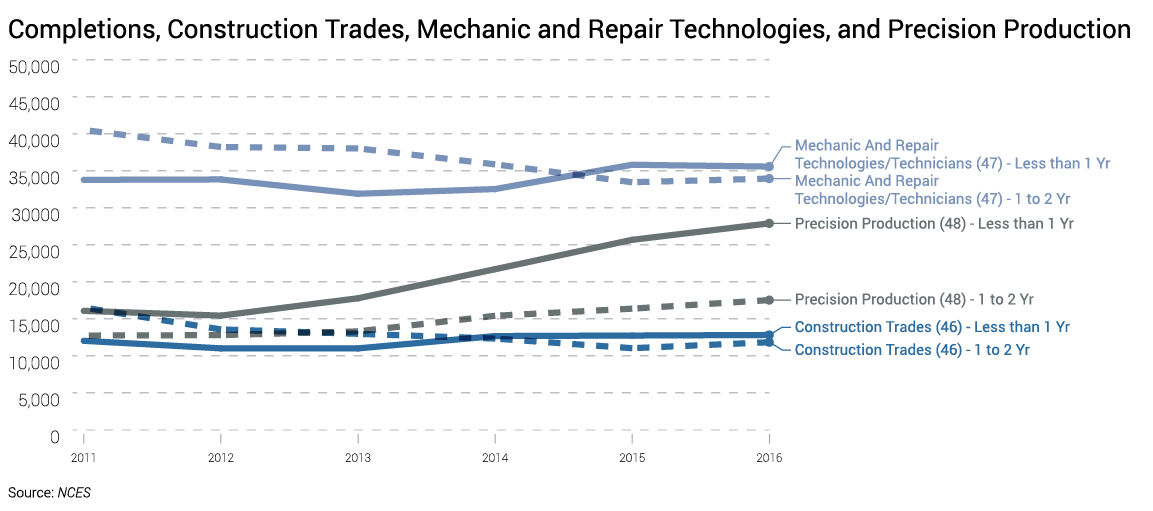For programs less than two years in length, more students have been opting for awards that take less than a year to complete. The NCES tracks two levels of awards lower than an associate’s degree: (1) certificates less than one year and (2) certificates more than one year but less than two years. From 2012 to 2016,[1] completions[2] for certificates between one and two years in length declined 12.6% while completions for certificates less than one year in length expanded 4.9%.
This trend is especially prevalent in programs that are technical or mathematics based. For example, Computer and Information Sciences and Support Services (CIP 11)[3] expanded 57.8% for certificates less than a year while declining 5.3% for certificates of one but less than two years. Engineering Technologies and Engineering-Related Fields (CIP 15) expanded 27.8% for certificates less than a year and decreased 22.3% for certificates of one but less than two years. Business, Management, Marketing and Related Support Services (CIP 52) expanded 45.7% for certificates less than a year, but decreased 5.7% for certificates of one but less than two years
There are several award programs, however, for which this trend did not hold. Largely, these tend to be programs that are less focused on mathematics and more focused on the humanities. For example, Education (CIP 13), Family and Consumer Sciences/Human Sciences (CIP 19), and Theology and Religious Vocations (CIP 39) expanded at the same rate for certificates less than a year as they did for certificates of one but less than two years.
In other humanities-oriented programs, the trend was completely reversed and certificates of one but less than two years grew more rapidly than certificates less than a year. For example, English Language and Literature/Letters (CIP 23) expanded only 21.8% in certificates less than a year but 72.7% in certificates of one but less than two years. Even more dramatically, Liberal Arts and Sciences, General Studies and Humanities (CIP 24) decreased 34.3% in certificates less than a year but expanded 88.4% in certificates of one but less than two years.
Among programs related to skilled trades, the trends seem to be consistent with the overall trend, with certificates less than a year increasing at a faster pace. For example, Construction Trades (CIP 46) expanded 16.4% in certificates less than a year but decreased 12.7% in certificates of one but less than two years; Mechanic and Repair Technologies/Technicians (CIP 47) expanded 5.1% in certificates less than a year and decreased 11.2% in certificates of one but less than two years; and Precision Production (CIP 48) expanded 80.7% in certificates less than a year but only expanded 36.9% in certificates of one but less than two years.
[1] Completions data are provided by the National Center for Education Statistics (NCES). For simplicity of reference, single years are used to refer to school years with the year referenced being the end year; for example, “2016” designates the 2015-16 academic year.
[2] “Completions” refers to degrees and other awards granted by postsecondary schools. The NCES completions data covers all schools participating in any federal financial assistance program authorized by Title IV of the Higher Education Act of 1965, as amended; institutions not participating may not be represented in this data set.
[3] “CIP” stands for the Classification of Instructional Programs.
.png)


